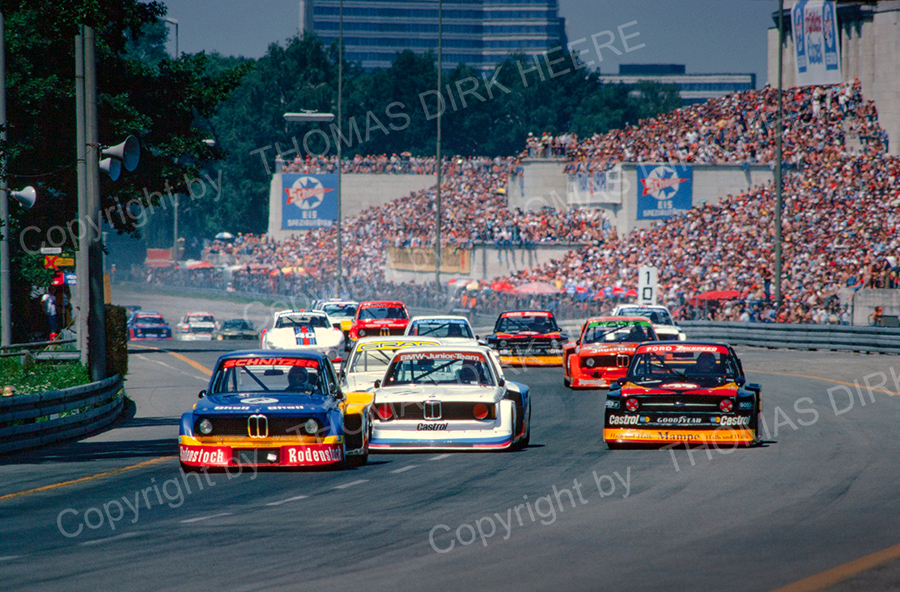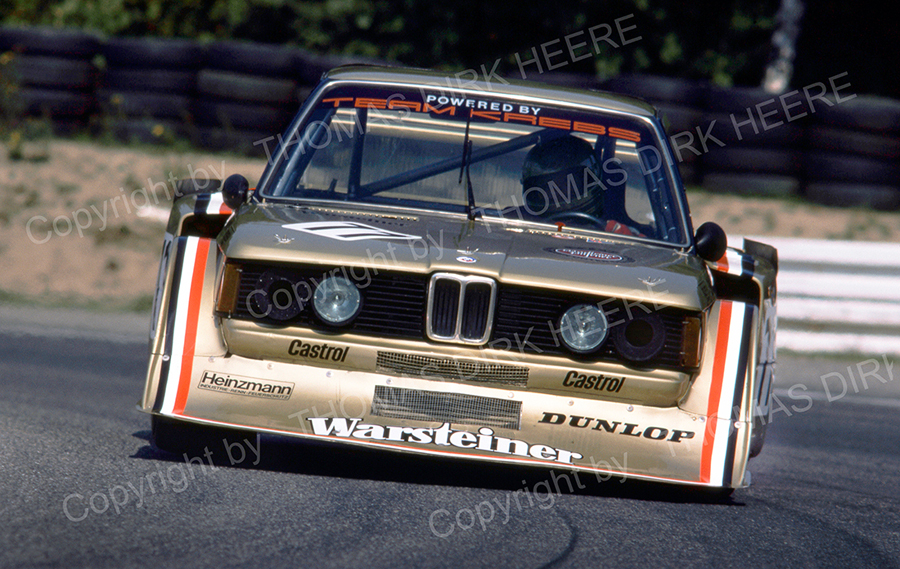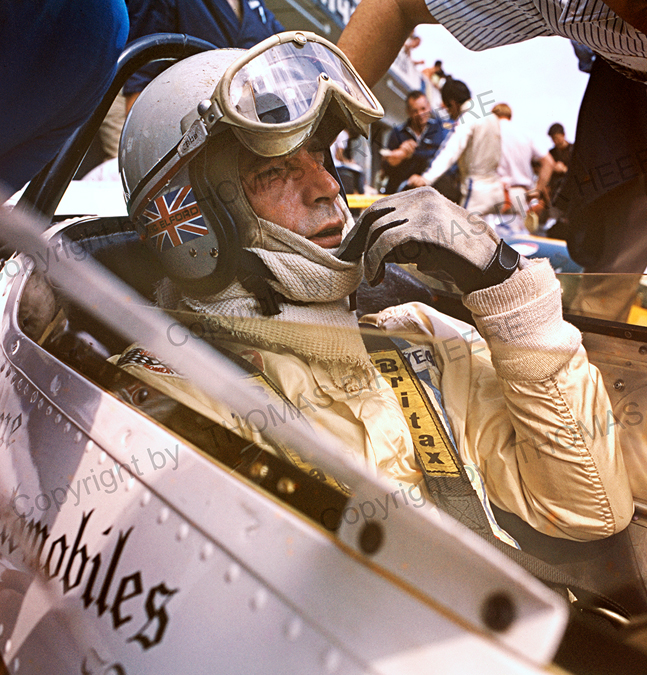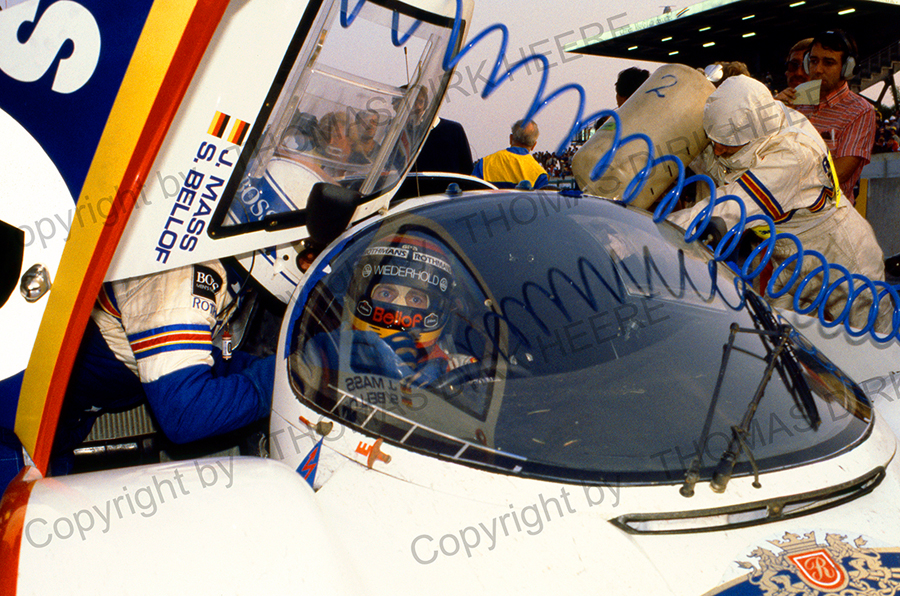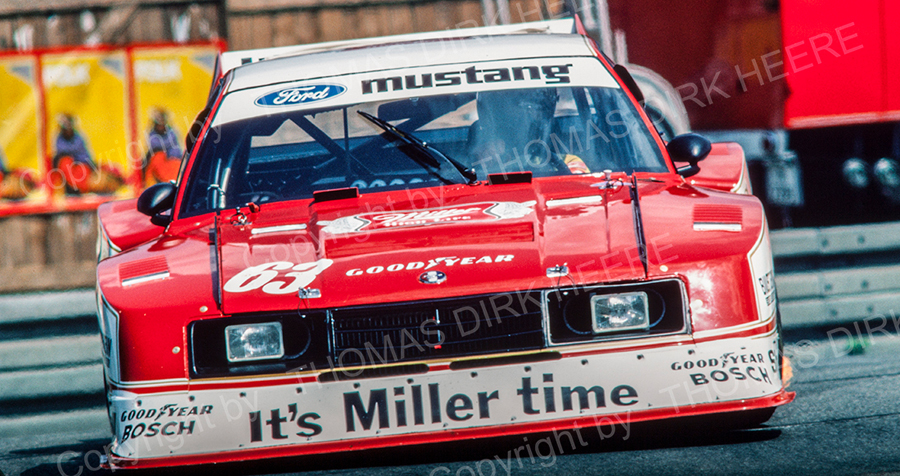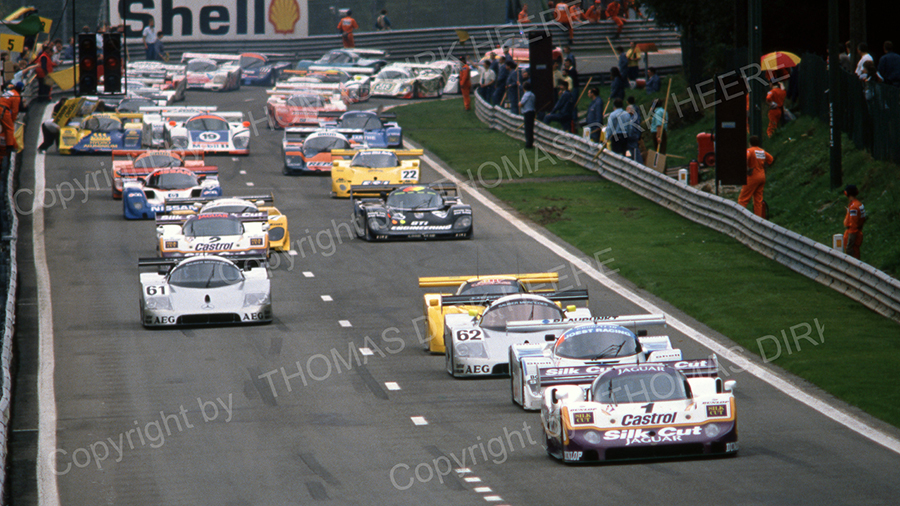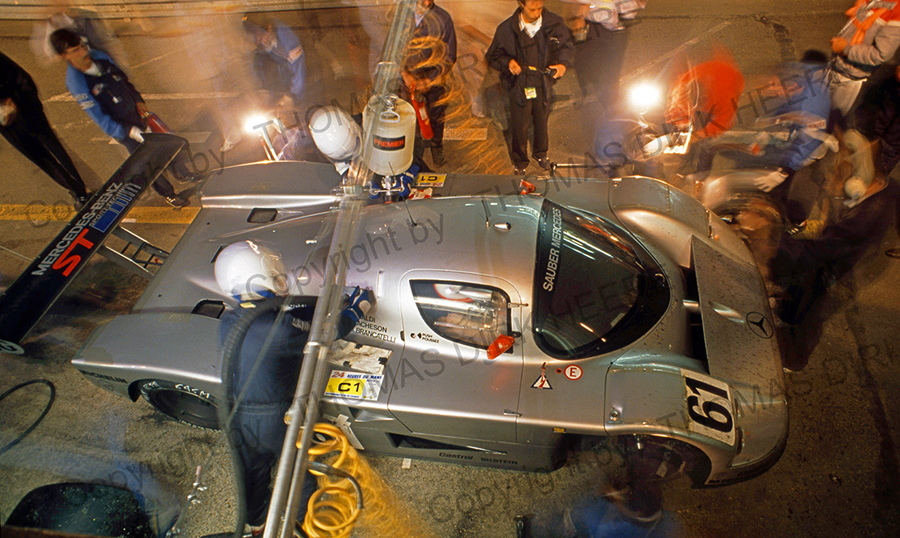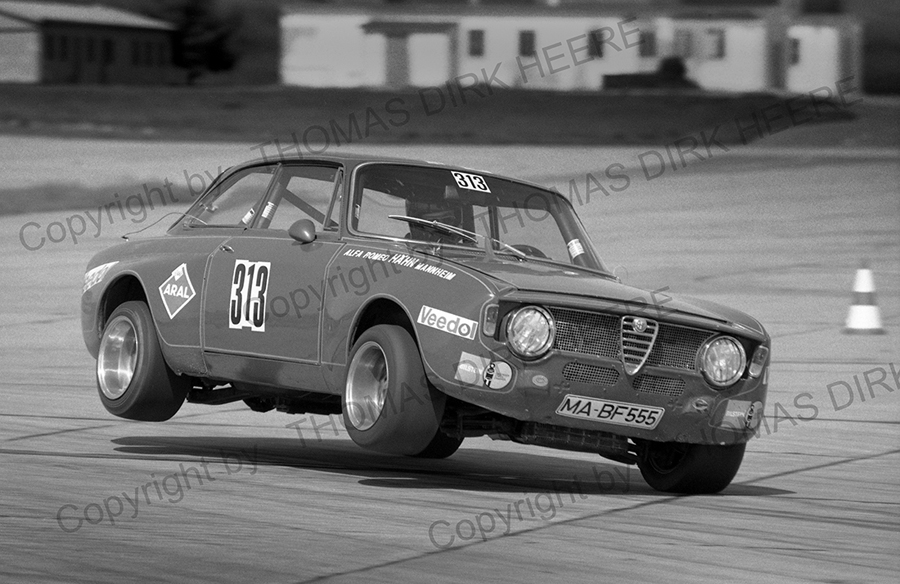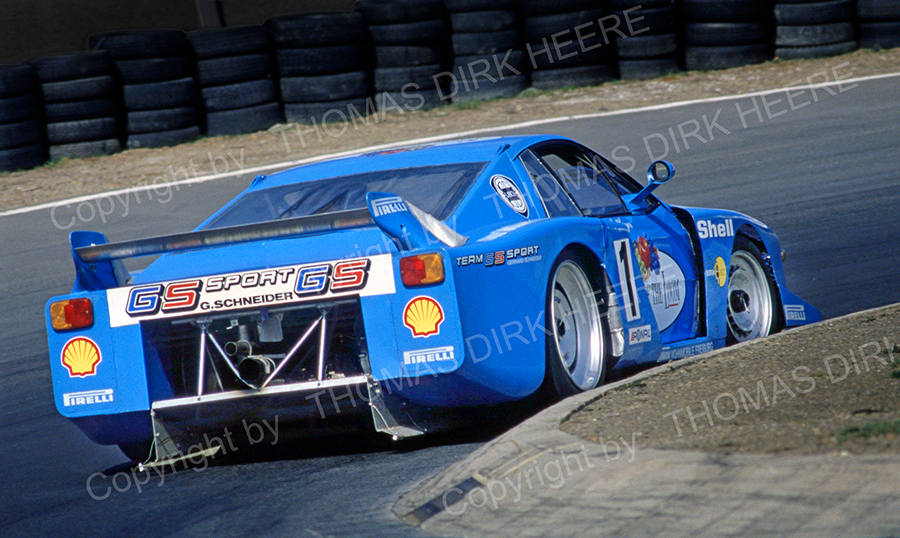Mit einem Klick auf den Banner gelangen Sie zur deutschen Version:
Thomas Dirk Heere - photojournalist from Frankfurt - not only experienced the great times of motorsports, but was there with his cameras up close. From 1969 to 1995 he was at home on the race tracks of Europe and was one of the best of his guild. Looking at his spectacular and vivid pictures, you can truly feel the motorsport fascination of those days and feel transported back to that special time. It was a great pleasure to visit Thomas and conduct the following interview.

1.Thomas, who or what inspired you to choose the profession of photographer and when did you first come into contact with motorsport and automotive photography?
As the son of a cameraman, I was allowed to develop black-and-white photos in my father's darkroom as a child. After school, I attended a private photography school, which I completed after two years with a diploma. I did my military service as a photographer in the press department of the III Corps in Koblenz. There, one day, the German Grand Prix at the Nürburgring was on the list as an editorial topic. This assignment in 1969 was the first reportage on motor sports in my life. After my time in the Bundeswehr, I worked in various photo studios, including three years as a photo assistant to Rainer W. Schlegelmilch. In my eyes, he was the best motorsport photographer of that time. After that, I took the risk of going freelance as a photojournalist with a focus on automotive photography. Motorsport photography was an important pillar of my professional existence.

2. You experienced the great days of motorsport at first hand. What was the special fascination of that time compared to today?
Today, I follow motorsports on TV and am impressed by the brilliant broadcast of a race, which conveys the action "up close" through the technical effort of countless camera perspectives. However, these impressions cannot surpass what you experience yourself at the race track. If, for example, you crouch behind the guardrail of a racetrack and the race cars race past you at a short distance, then this experience is deeply impressive. Incidentally, contact with the drivers, team bosses and organizers was easier and more direct because there was none of the compartmentalization of the individual teams that is practiced today.
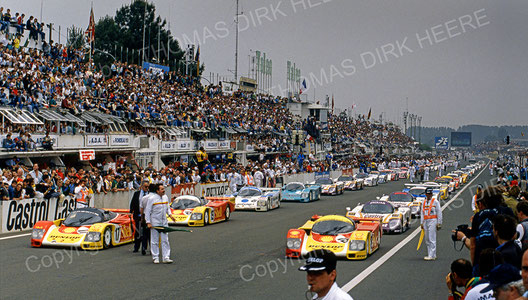
3. Looking back, which events or shootings are among your absolute highlights?
That's difficult to answer. In the 30 or so years I've spent at many race tracks in Europe, there have been many events that have been exciting, spectacular, sometimes sad, but always fascinating. But the 24 Hours of Le Mans races were probably outstanding events. Physically exhausting, since with arrival and departure 4 days and nights almost without sleep had to be mastered. I needed a full day at home in Frankfurt afterwards to make up for my sleep deficit.

4. The photographic possibilities have changed dramatically as a result of digitization. Today, the editors usually have the photo material shortly after the event has ended. How would you describe the process in your day?
Back then, too, things usually had to happen quickly. The editor of the magazine you worked with usually took the undeveloped films from the race weekend with him to have them developed in the in-house lab first thing Monday morning. Unfortunately, one often got the films back in one's own possession very late in order to market the material further. Sometimes you waited months ...

5. In order to take the perfect picture, did you put up with dangerous situations from time to time?
Reflecting on the days of minimal safety precautions as opposed to today, we, the racing photographers, were often out in the dangerous zones of the race track to catch fascinating perspectives. The trade-off, how far can you get close to the cars in the camber of a corner, often depended on the longest focal lengths of your telephoto lenses and your own courage. The "two eyes shooting" was a must if you wanted to control the situation: One eye focused on the race cars in the viewfinder, the other stayed open and kept track of hazards that were not visible in the camera's viewfinder. I survived many extreme situations, when vehicles skidded or overturned, well with this technique and the evasion at the last second.

6. What was the most emotional moment for you during your time as a photojournalist in the automotive and motorsports segment?
Well, it's often the news reporting the death of a racer you knew well through your work over the many years or with whom you were on friendly terms. In relation to myself, I was particularly excited when I managed to get a spectacular series of photos of a fire accident during a pit stop. Briefly narrated: To get a special perspective, I sat down in the spectator stands instead of taking my shots very close to the action in the pit lane as usual. At the Sports Car World Championship round in Hockenheim, Jochen Mass came into the pits for refueling and a driver change. I had just put a fresh film in the camera and was taking pictures when suddenly the car was in a huge fireball. The motor drive of my camera ran until the entire film was exposed. With trembling hands and soft knees, I was aware that I had my most exciting photo series in the can.

7. Was there a race series that was particularly in your focus?
Certainly. The World Sports Car Championship with the Group C cars. I had a contract with Jaguar Germany, which I also had the pleasure of counting among my other clients for car photography, to document Jaguar's successes in this racing series in the "JAGUAR Racing Information". For several years I was on the road in Europe for this work and had intensive contact with Tom Walkinshaw and his Jaguar teams.

8. Over the years, there have certainly been one or two anecdotes. Can you think of any off the top of your head?
There were so many that you could write a book about them... for example: For the magazine Sport-Auto I photographed a Formula 1 track test in Hockenheim of the Arrows A7. In order to capture a dynamic impression of the ride in the photo, I sat down on the engine cover of the bolide, lashed my pants belt to the roll bar with a rope and wanted to create photos over the driver and the cockpit. Slow driving was agreed upon. But it came differently. Instead of taking photos, I was scared to death! Despite shouts to slow down, which the driver did not hear because of the noise, it went around the small course ... I held on doggedly to the roll bar and could not take a single photo and was glad not to have contact with the thick rear rollers. After renewed consultation in the pits, I finally managed to realize the desired impressions on the second lap at a moderate pace.

9. What was the special attraction of motorsport photography for you?
On the one hand, it was the intensive contact with all those involved in a race, but also my own drive to portray the fascination of fast cars in ever new facets of my view. In addition, there was the fact that in the analog era of photography, slide films plus development were quite expensive. So the challenge was to get the perfect picture in one "shot". This precision in situation assessment and execution was the desirable goal, also to keep costs under control. The use of the camera's motor drive was only required when something unforeseen happened.

10. At the end of the 1990s, you stopped reporting on car racing. What made you do that?
It was the sober consideration as a businessman that motorsports photography must be profitable. After becoming more and more involved in my main field of activity, providing the automotive industry with fine photos of their latest road models, I often had to cancel with some editors for a race weekend. This opened the door to "competition" and so it came to pass that I really only cared about my automotive client base.
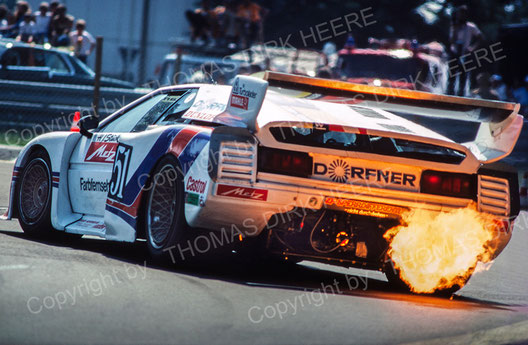
11. What was your photographic field of activity after you finished your motor sports photography?
It was mainly the photographic realization of the wishes of various press departments of automobile factories for fresh, dynamic or also atmospheric motifs of their new models. This led me on my travels to Africa, through Europe, America and Australia. Working for the relevant motor press, such as AMS, SportAuto, RallyeRacing, AutoZeitung, MotorKlassik or ADAC Motorwelt has also always been a great pleasure and has often been a "door opener" for new projects. An eventful and moving life with my cameras in my luggage ....
Thank you very much, Thomas, for answering my questions. Stay healthy and all the best.
Enjoy the following pictures and visit Thomas Dirk Heere's website heeretd.myportfolio.com/work for many more spectacular shots.


